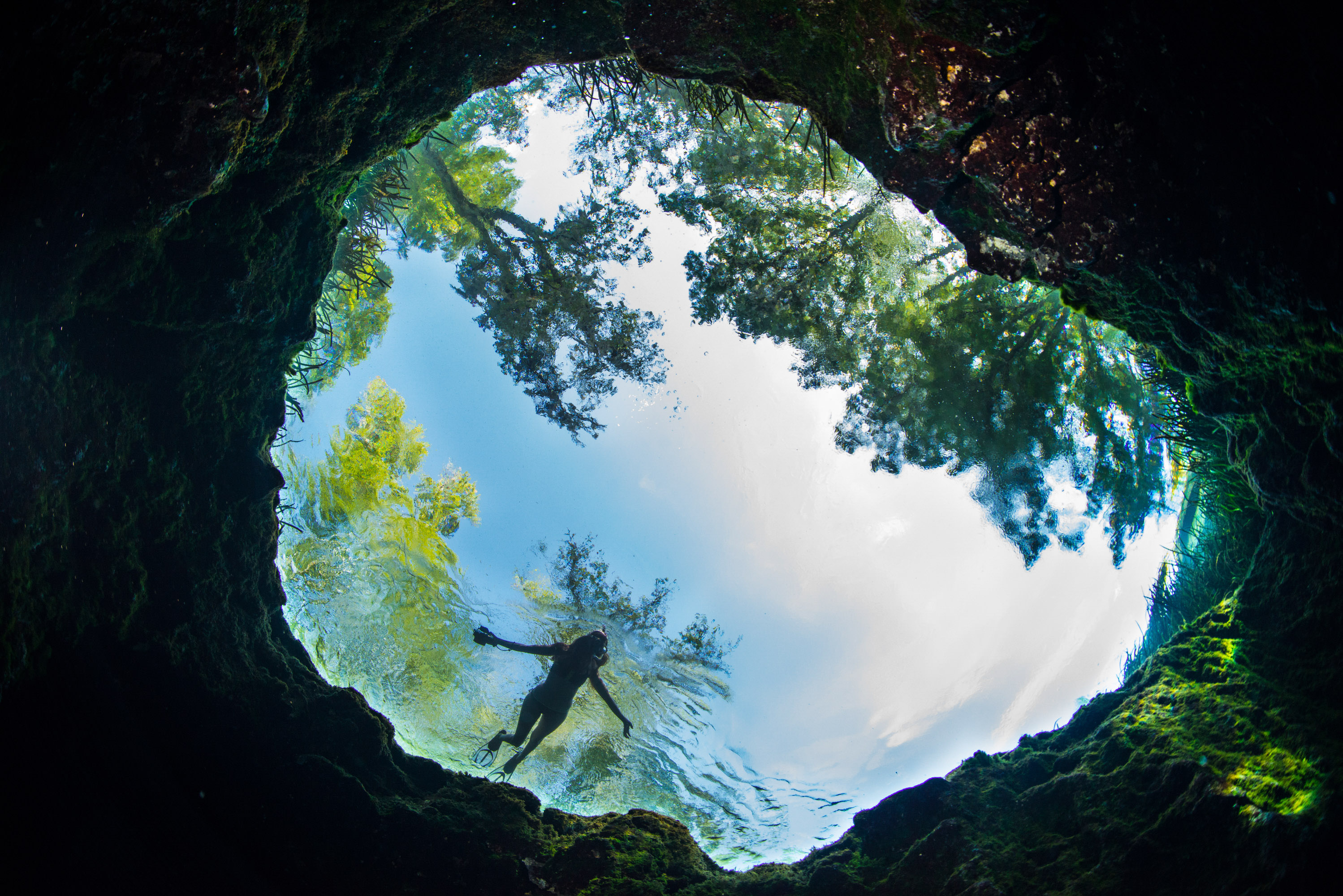Freshwater Springs
Protecting this cherished resource for people and nature is a priority.
Florida’s springs are one of our state's highly cherished resources, nourishing people and wildlife, providing critical groundwater to rivers and estuaries, delivering freshwater for bottling, and offering unique opportunities for recreation. Our springs are iconic – many state parks provide access to these beautiful and important natural features. When thinking about our springs, people often envision Florida’s beloved manatees, as well as the many other species of wildlife that rely on these clear waters, from rare fish and mussels to black bears.
The Florida springs region is one of the most unique freshwater regions anywhere, boasting the largest concentration of springs in the world from one of the highest producing aquifers. The Floridan Aquifer underlies an area of approximately 100,000 square miles and extends from portions of South Carolina, Georgia, Mississippi, Alabama and throughout all of Florida. The aquifer provides drinking water to most cities in the central and northern part of our state.

Blue Springs in Florida attracts large numbers of manatees to its clear waters.
Sadly, there are stresses that damage this life-giving system, currently challenged by a lack of water, pollution, invasive species, excessive nutrients, and erosion. With great impact, the aquifer is being depleted as demand for water grows in urban areas and due to unsustainable agricultural practices. Given Florida’s population growth rates, the state’s freshwater demands are expected to increase by 20 percent over the next 20 years. By 2035, Floridians — homeowners, farmers, everyone — will be using 1.4 billion gallons of freshwater everyday.
At TNC, our team of experts, from scientists to government relations professionals, is working to ensure freshwater resources are healthy and abundant, from surface waters to groundwater. Our science-based approach allows us to identify where freshwater, springs protection and restoration efforts will have the greatest beneficial impact and success, and focus our efforts there. We look at broader watershed issues and local waters. We share our knowledge to help inform state policy and provide opportunity for collaboration with government agencies.

Endangered Florida manatees roll and frolic on the sandy floor of a Florida spring.
Springs Protection and Restoration
TNC helps protect the water sources and the lands which support the recharge of high quality and high volumes of water to our natural systems — these lands and forests are critical to the filtration of water to replenish our aquifer. Our experts collaborate with many agency, university and other nongovernmental organizations (NGOs) to identify the best sites for our work in three categories: Water quantity protection, water quality protection, and land protection. From mapping critical springs to working on policy with lawmakers, we advocate for clean water. As populations grow in our state, we must be prepared for additional water demands. We were recently successful in encouraging a new Florida law that requires that the state plan for projects that provide for quality and quantity water for nature as well as for people. Additionally, we supported the Florida Springs and Aquifers Protection Act, for which the state dedicated $50 million a year for water quality and land protection for Florida’s springs.
TNC is working to ensure people, natural systems, and wildlife benefit from clean and abundant freshwater.



